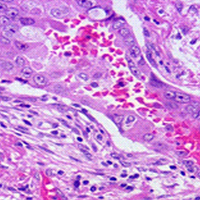Swertianolin ameliorates immune dysfunction in sepsis via blocking the immunosuppressive function of myeloid-derived suppressor cells

Submitted: 21 June 2021
Accepted: 26 July 2021
Published: 1 September 2021
Accepted: 26 July 2021
Abstract Views: 941
PDF: 660
HTML: 19
HTML: 19
Publisher's note
All claims expressed in this article are solely those of the authors and do not necessarily represent those of their affiliated organizations, or those of the publisher, the editors and the reviewers. Any product that may be evaluated in this article or claim that may be made by its manufacturer is not guaranteed or endorsed by the publisher.
All claims expressed in this article are solely those of the authors and do not necessarily represent those of their affiliated organizations, or those of the publisher, the editors and the reviewers. Any product that may be evaluated in this article or claim that may be made by its manufacturer is not guaranteed or endorsed by the publisher.
Similar Articles
- S. He, J. Yang, Maturation of neurotransmission in the developing rat cochlea: immunohistochemical evidence from differential expression of synaptophysin and synaptobrevin 2 , European Journal of Histochemistry: Vol. 55 No. 1 (2011)
- Yiming Zhang, Wanqiong Zheng, Liang Zhang, Yechun Gu, Lihe Zhu, Yingpeng Huang, LncRNA FBXO18-AS promotes gastric cancer progression by TGF-β1/Smad signaling , European Journal of Histochemistry: Vol. 67 No. 2 (2023)
- Hui Xu, Yanbo Chen, Qi Chen, Huan Xu, Yanxia Wang, Jiao Yu, Juan Zhou, Zhong Wang, Bing Xu, DNMT1 regulates IL-6- and TGF-β1-induced epithelial mesenchymal transition in prostate epithelial cells , European Journal of Histochemistry: Vol. 61 No. 2 (2017)
- C.A. May, I. Osterland, Merkel cell distribution in the human eyelid , European Journal of Histochemistry: Vol. 57 No. 4 (2013)
- C. Serradifalco, P. Catanese, L. Rizzuto, F. Cappello, R. Puleio, V. Barresi, C. M. Nunnari, G. Zummo, V. Di Felice, Embryonic and foetal Islet-1 positive cells in human hearts are also positive to c-Kit , European Journal of Histochemistry: Vol. 55 No. 4 (2011)
- A. Porzionato, M. M. Sfriso, V. Macchi, A. Rambaldo, G. Lago, L. Lancerotto, V. Vindigni, R. De Caro, Decellularized omentum as novel biologic scaffold for reconstructive surgery and regenerative medicine , European Journal of Histochemistry: Vol. 57 No. 1 (2013)
- Wei Wang, Wenbo Tang, Erbo Shan, Lei Zhang, Shiyuan Chen, Chaowen Yu, Yong Gao, MiR-130a-5p contributed to the progression of endothelial cell injury by regulating FAS , European Journal of Histochemistry: Vol. 66 No. 2 (2022)
- Xuanjin Zhu, Weilu Jia, Yong Yan, Yong Huang, Bailin Wang, NOP14 regulates the growth, migration, and invasion of colorectal cancer cells by modulating the NRIP1/GSK-3β/β-catenin signaling pathway , European Journal of Histochemistry: Vol. 65 No. 3 (2021)
- G. Caocci, M. Greco, D. Fanni, G. Senes, R. Littera, S. Lai, P. Risso, C. Carcassi, G. Faa, G. La Nasa, HLA-G expression and role in advanced-stage classical Hodgkin lymphoma , European Journal of Histochemistry: Vol. 60 No. 2 (2016)
- M. Ferreira Júnior, S.A. Batista, P.V.T. Vidigal, A.A.C. Cordeiro, F.M.S. Oliveira, L.O. Prata, A.E.T. Diniz, C.M. Barral, R.C. Barbuto, A.D. Gomes, I.D. Araújo, D.M.M. Queiroz, M.V. Caliari, Infection with CagA-positive Helicobacter pylori strain containing three EPIYA C phosphorylation sites is associated with more severe gastric lesions in experimentally infected Mongolian gerbils (Meriones unguiculatus) , European Journal of Histochemistry: Vol. 59 No. 2 (2015)
<< < 7 8 9 10 11 12 13 14 15 16 > >>
You may also start an advanced similarity search for this article.

 https://doi.org/10.4081/ejh.2021.3292
https://doi.org/10.4081/ejh.2021.3292











